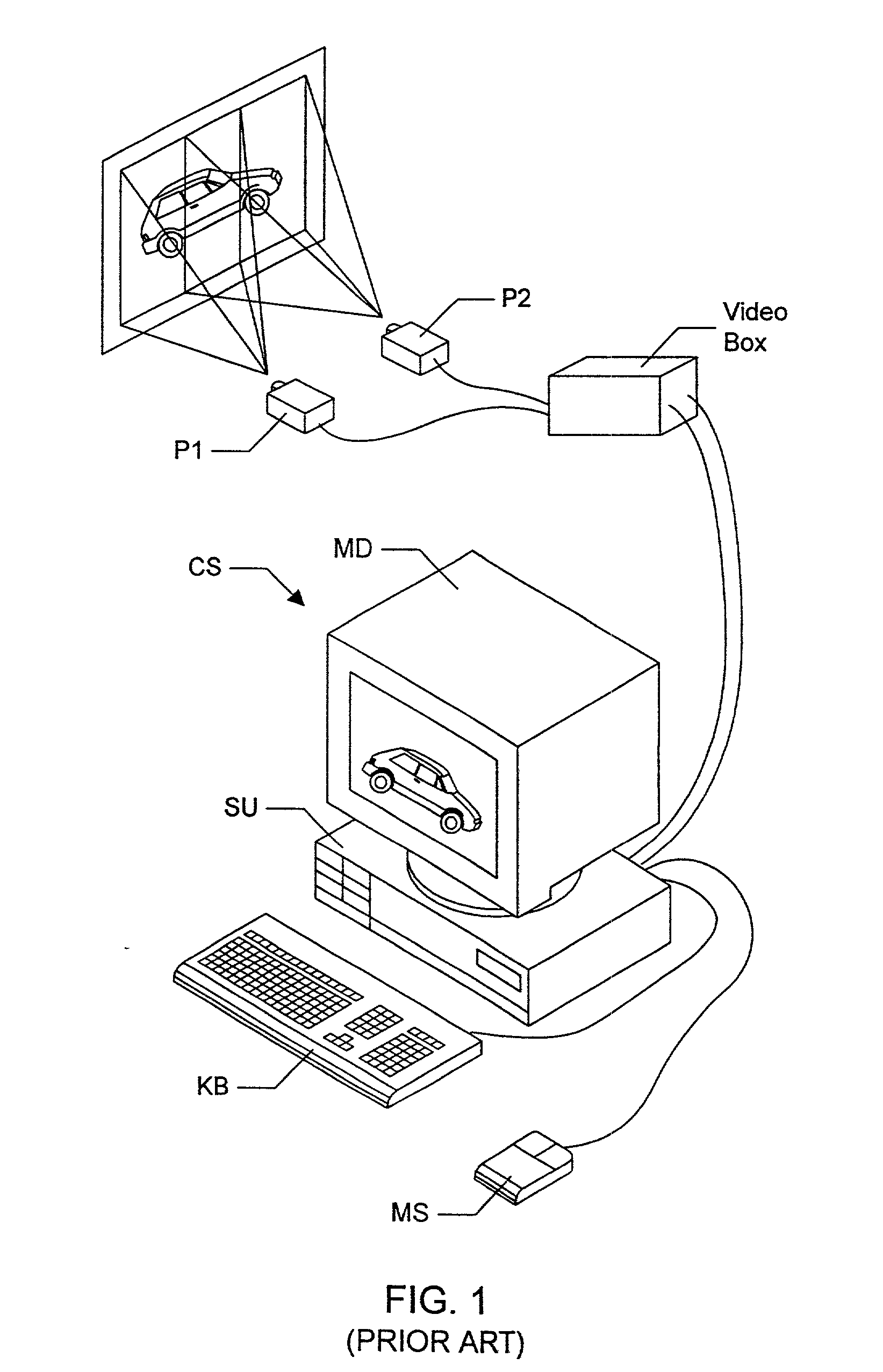Graphics system configured to perform distortion correction
a distortion correction and graphics system technology, applied in image enhancement, pulse technique, instruments, etc., can solve the problems of increased brightness of overlap regions, difficult configuration, and high cos
- Summary
- Abstract
- Description
- Claims
- Application Information
AI Technical Summary
Problems solved by technology
Method used
Image
Examples
second embodiment
[0150] In a second embodiment, graphics system 112 comprises graphics boards 114-1 through 114-M which couple to projection devices PD.sub.1-PD.sub.L in a one-to-two fashion, i.e. generic graphics board 114-I couples to and generates video signals for two projection devices PD.sub.1 and PD.sub.I+1 as shown in FIG. 8C. Thus, integer M equals L / 2.
third embodiment
[0151] In a third embodiment, graphics system 112 comprises graphics boards 115-1 through 115-R which couple to projection devices PD.sub.1-PD.sub.L in a two-to-one fashion, i.e. graphics boards 115-I and 115-(I+1) may be daisy chained together to generate a video signal for projection device PD.sub.I as shown in FIG. 8D. Thus, integer R equals 2L.
[0152] Graphics boards 113, 114, and 115 may be interchangeable between the three embodiments just described. In other words, graphics boards 113, 114 and 115 may be identical or substantially similar, and may be used in any of the above three embodiments subject to changes in software configuration. Alternatively, graphics boards 113, 114 and 115 may be optimized for their respective embodiments.
[0153] The present invention contemplates a wide distribution of possible mappings between graphics boards and projection devices. At one end of the distribution, a single graphics board may drive L projection devices, where the size of L is limit...
PUM
 Login to View More
Login to View More Abstract
Description
Claims
Application Information
 Login to View More
Login to View More - R&D
- Intellectual Property
- Life Sciences
- Materials
- Tech Scout
- Unparalleled Data Quality
- Higher Quality Content
- 60% Fewer Hallucinations
Browse by: Latest US Patents, China's latest patents, Technical Efficacy Thesaurus, Application Domain, Technology Topic, Popular Technical Reports.
© 2025 PatSnap. All rights reserved.Legal|Privacy policy|Modern Slavery Act Transparency Statement|Sitemap|About US| Contact US: help@patsnap.com



